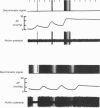Abstract
1. The responses of the rapidly adapting receptors (RARs) and the slowly adapting receptors (SARs) of the airways to changes in the Starling forces regulating fluid exchange in the pulmonary extravascular space were investigated in anaesthetized rabbits. The hydrostatic pressure in the pulmonary microvasculature was raised by partial obstruction of the mitral valve (mean left atrial pressure increased by approximately 5 and 10 mmHg above the control values) and the concentration of plasma proteins was reduced by plasmapheresis (the total plasma protein concentration reduced by 18%). 2. There was a significant correlation between the action potentials generated by RARs and mean left atrial pressure (n = 12). A similar response was not observed in SARs (n = 12). 3. After plasmapheresis, there was an increase in the resting activity of the RARs (n = 5). In addition, the stimulus-response curve relating mean left atrial pressure and RAR activity was significantly shifted to the left compared to the one elicited before plasmapheresis. Plasmapheresis failed to influence the activity of SARs (n = 5). 4. Obstruction of the pulmonary lymph flow by raising the afterload in the right external jugular vein caused a significant increase in the activity of RARs (n = 6). This response was also maintained during the entire period of lymphatic obstruction. 5. The results show that manipulation of the Starling forces within the lung influences the RAR activity profoundly. It is suggested that the stimulus for the RARs may be a function of the fluid fluxes in the pulmonary extravascular space.
Full text
PDF
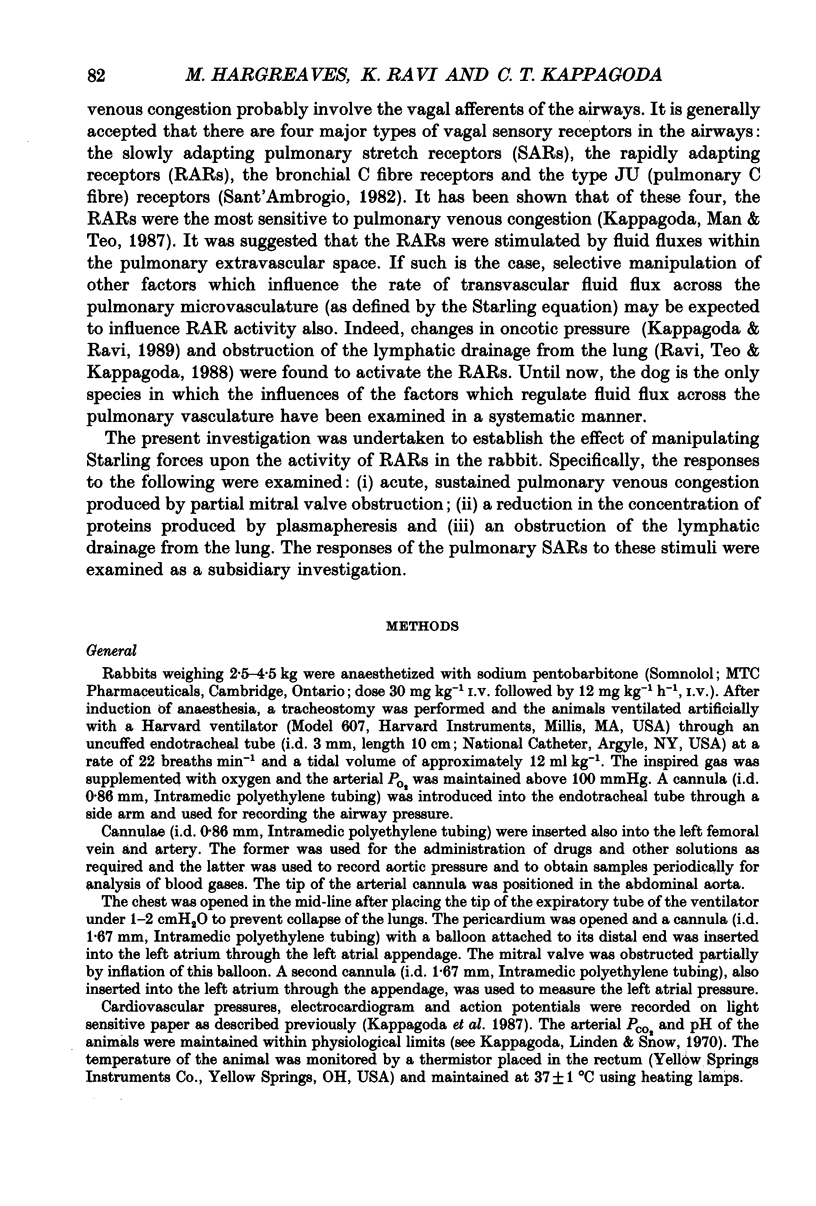
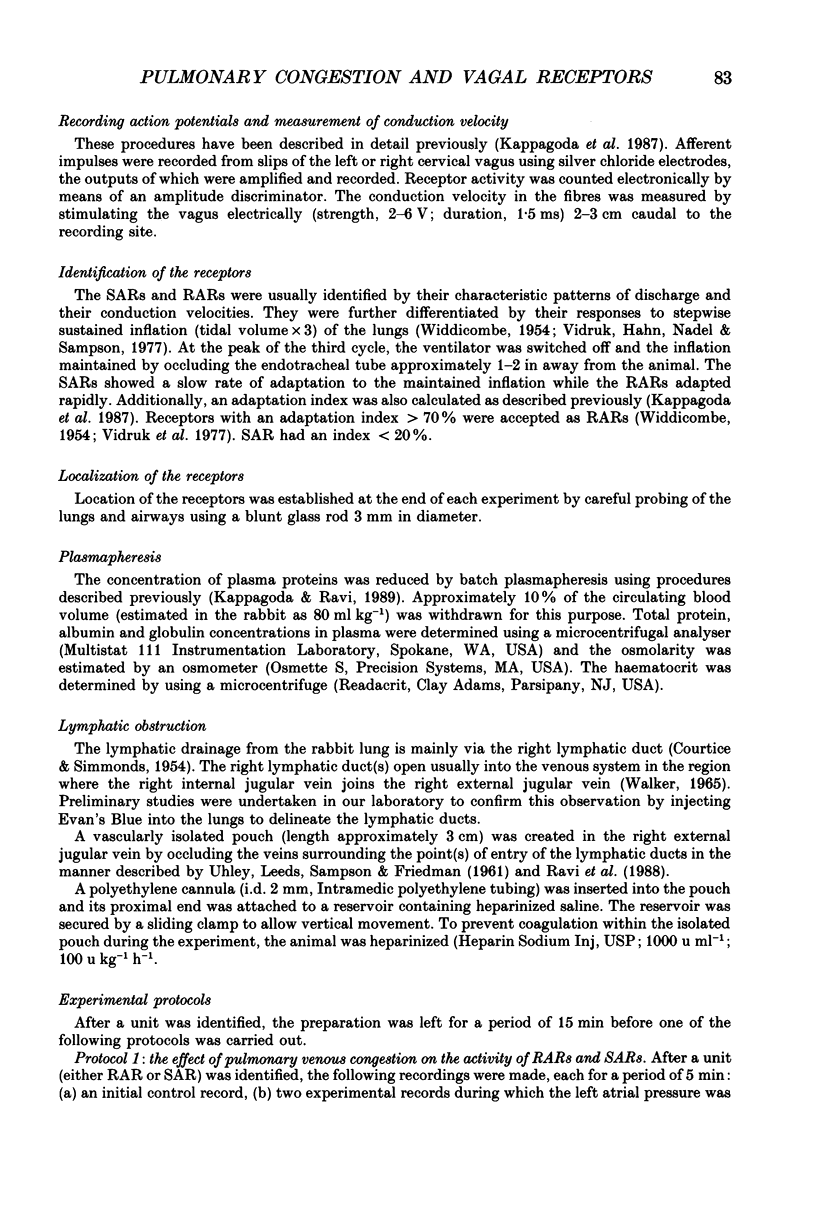
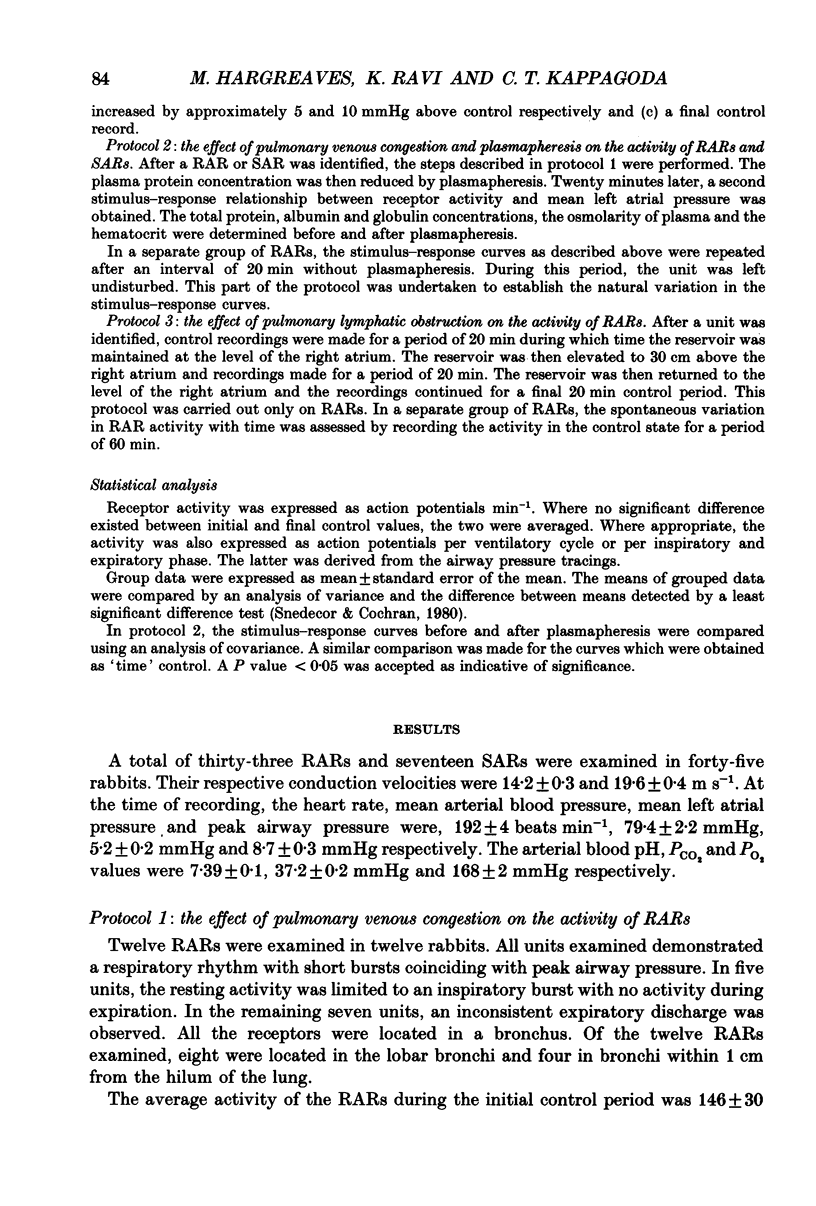
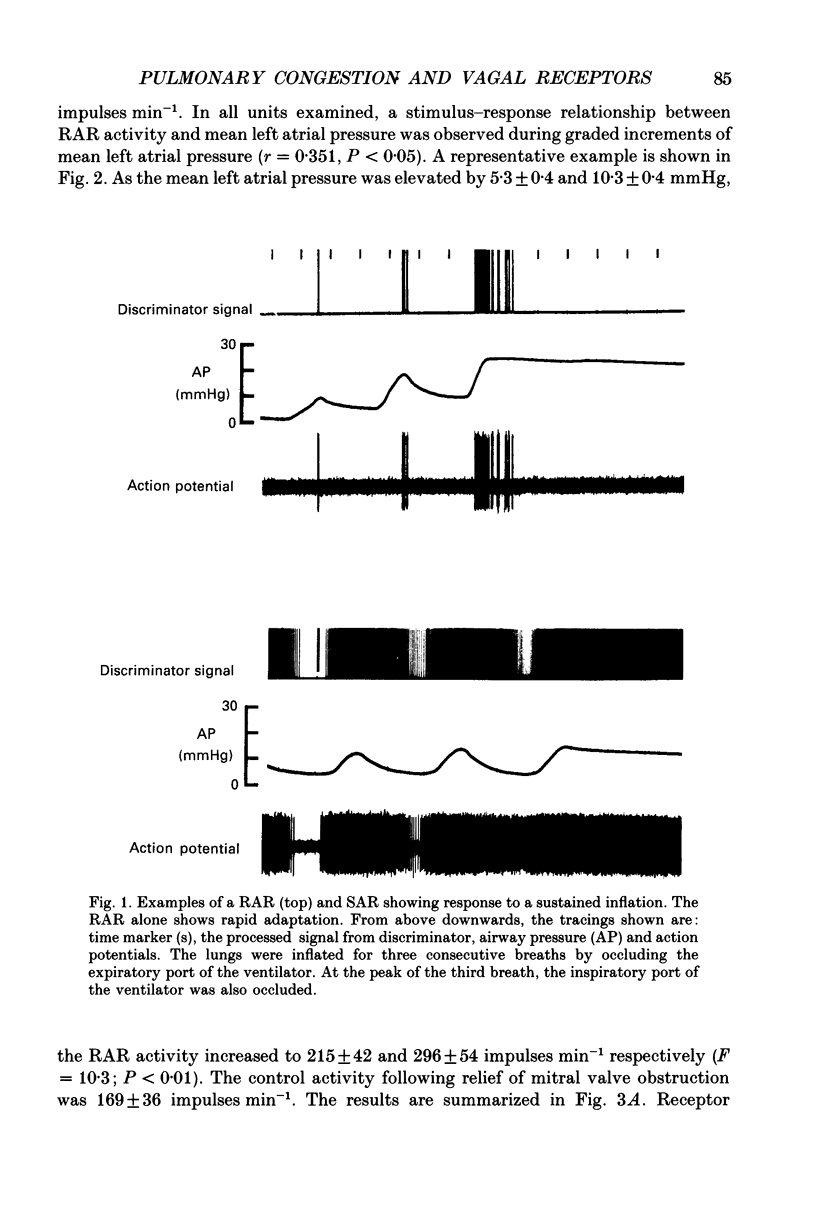
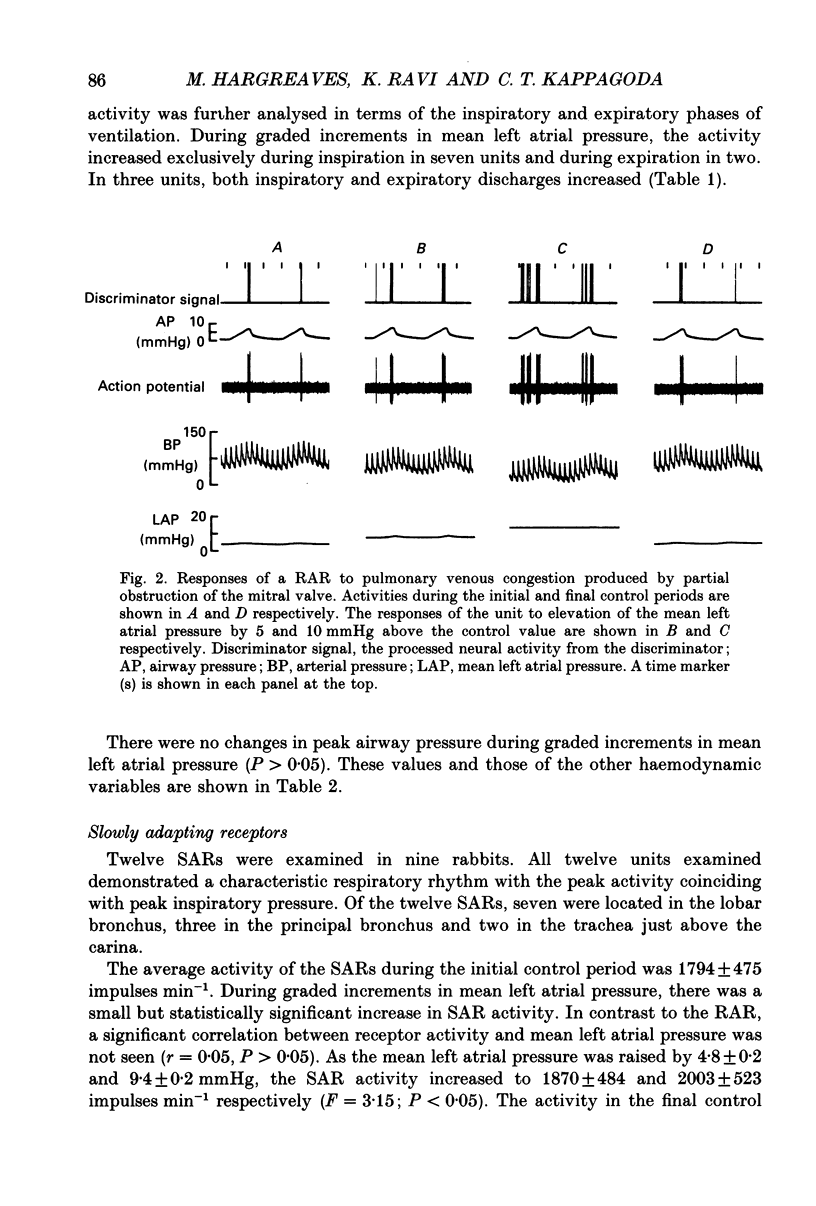
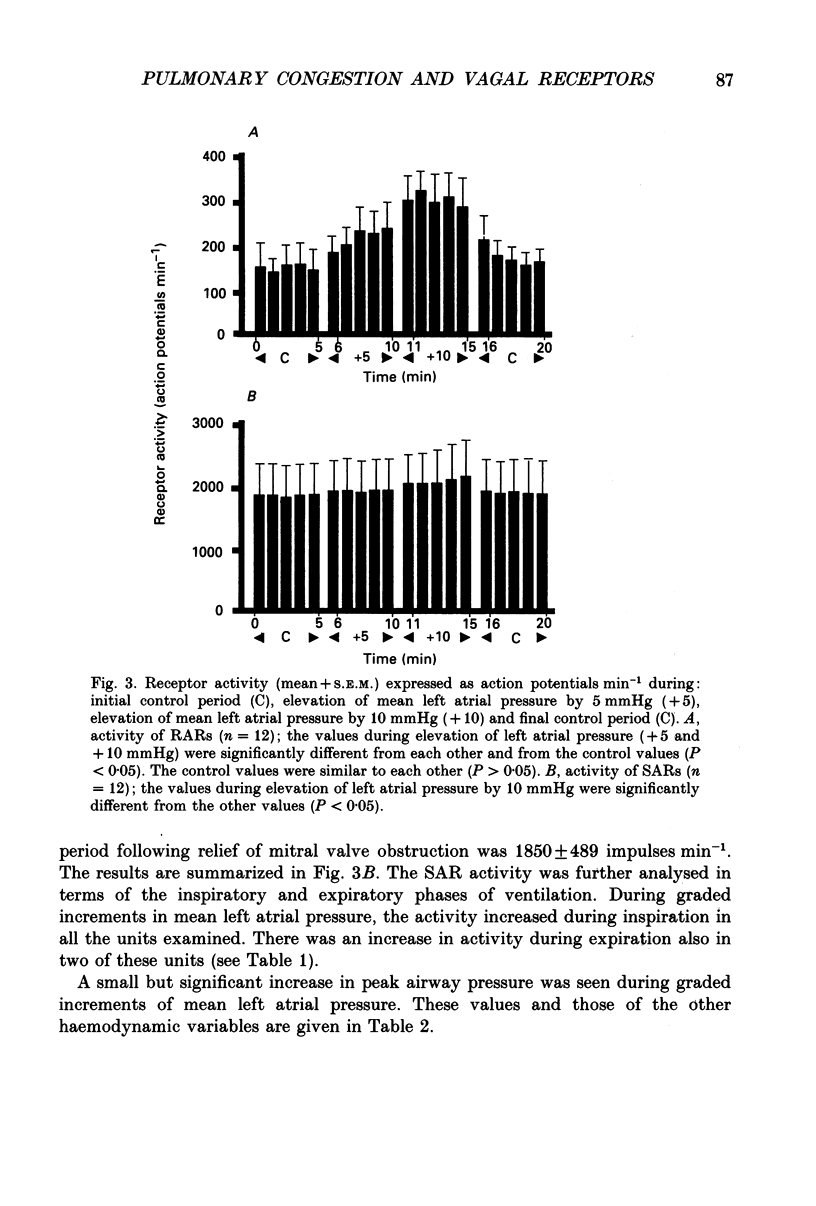
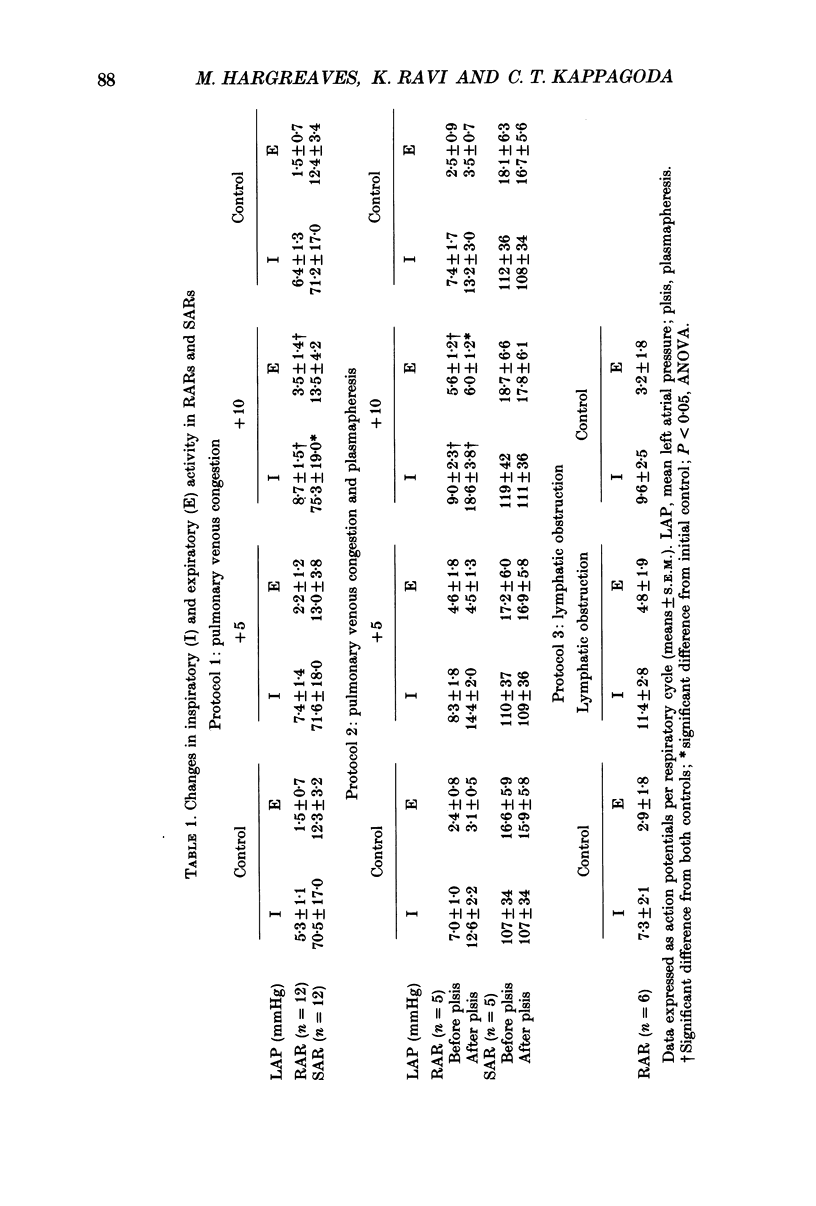
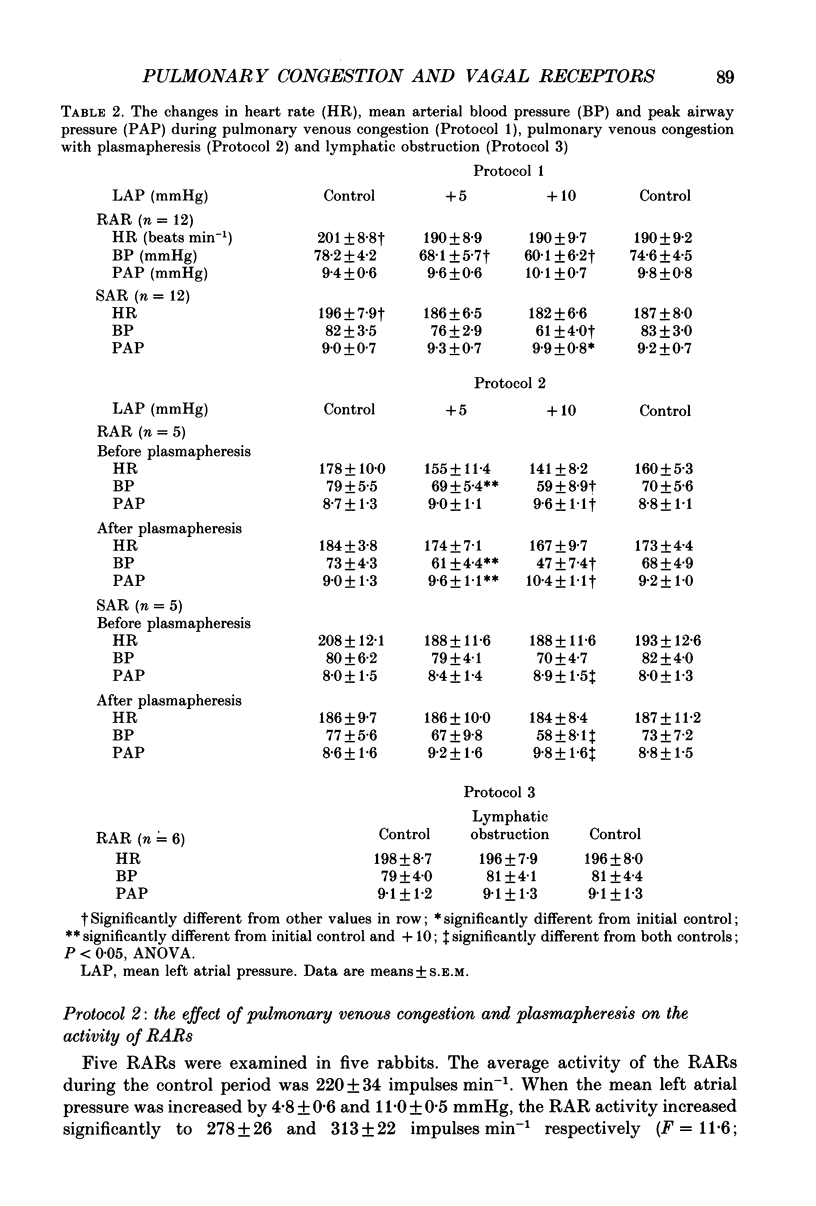
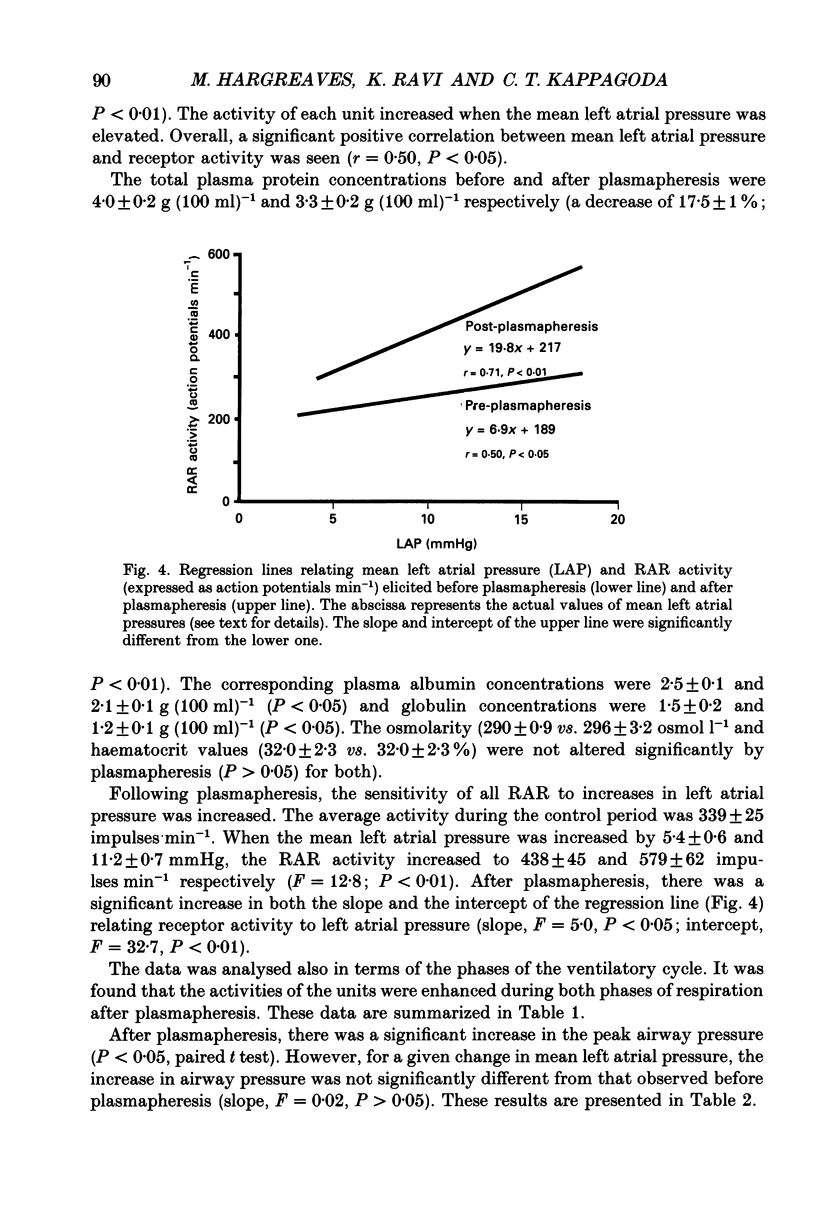
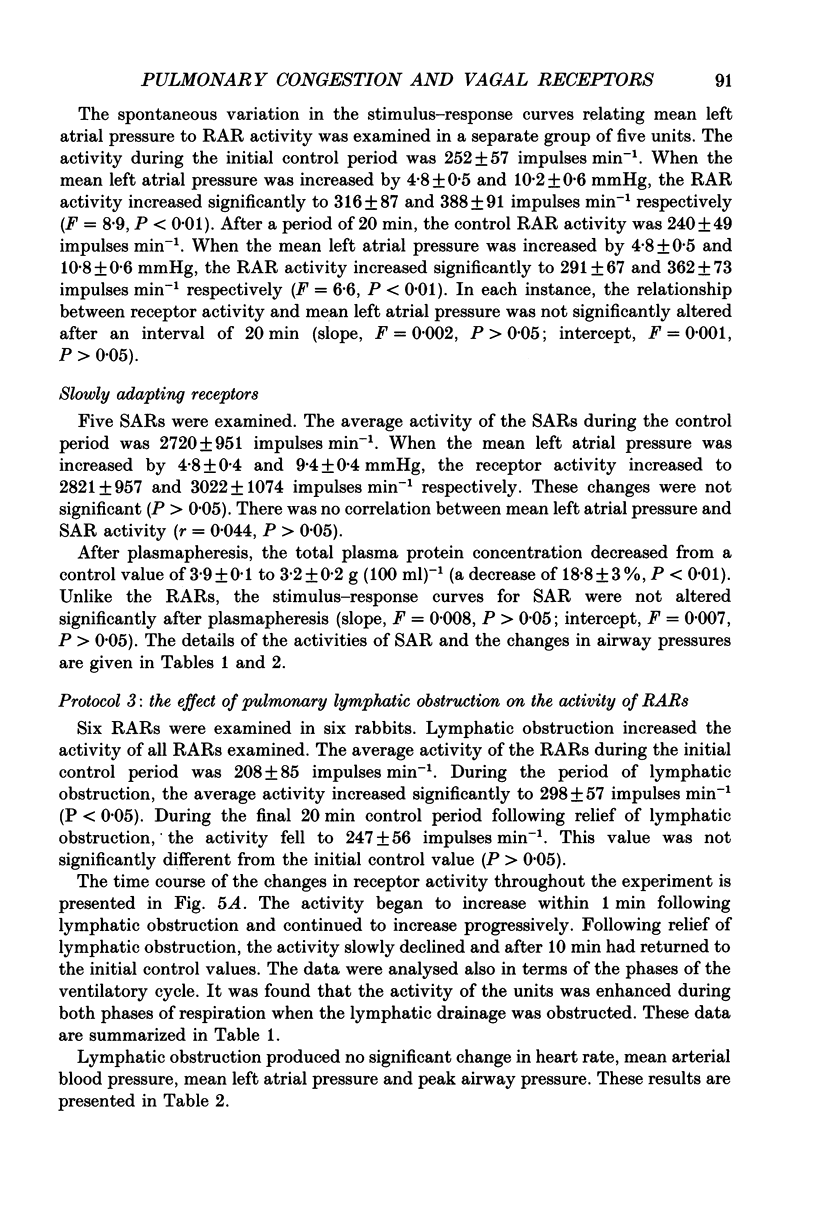
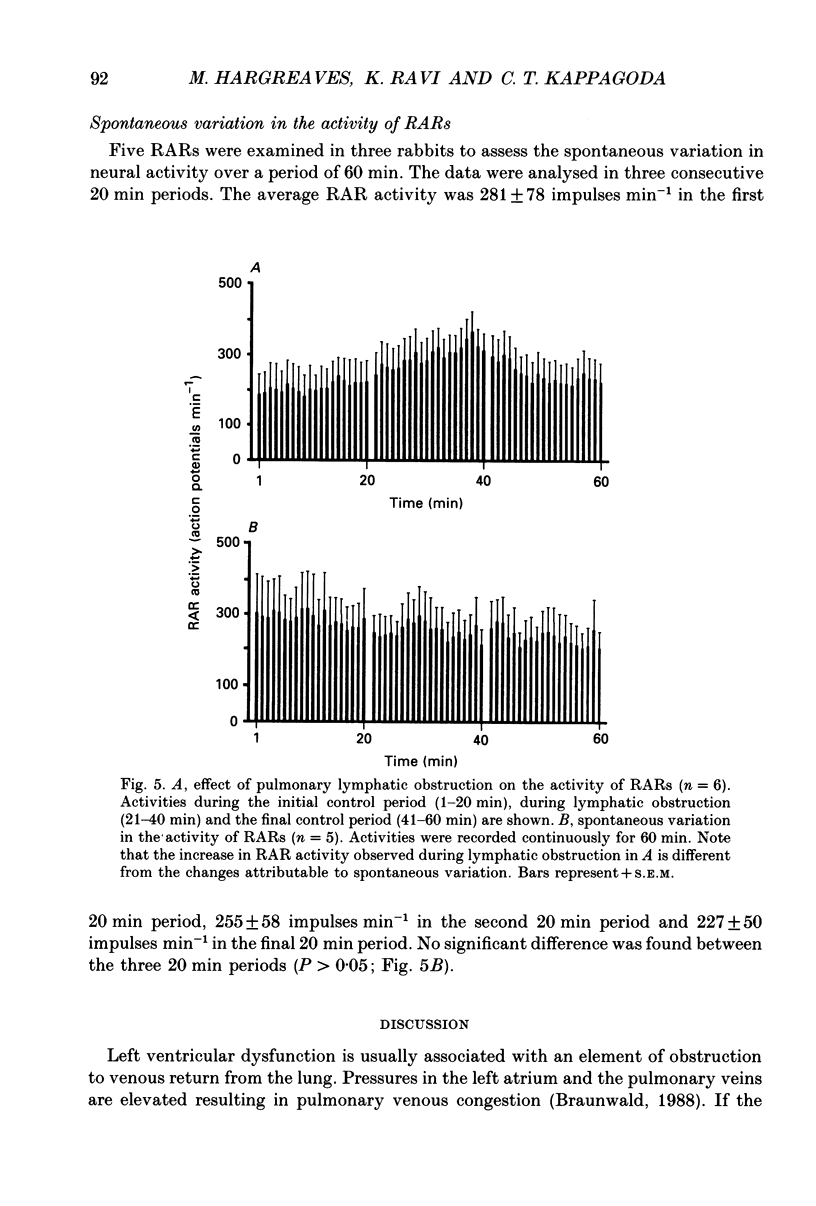
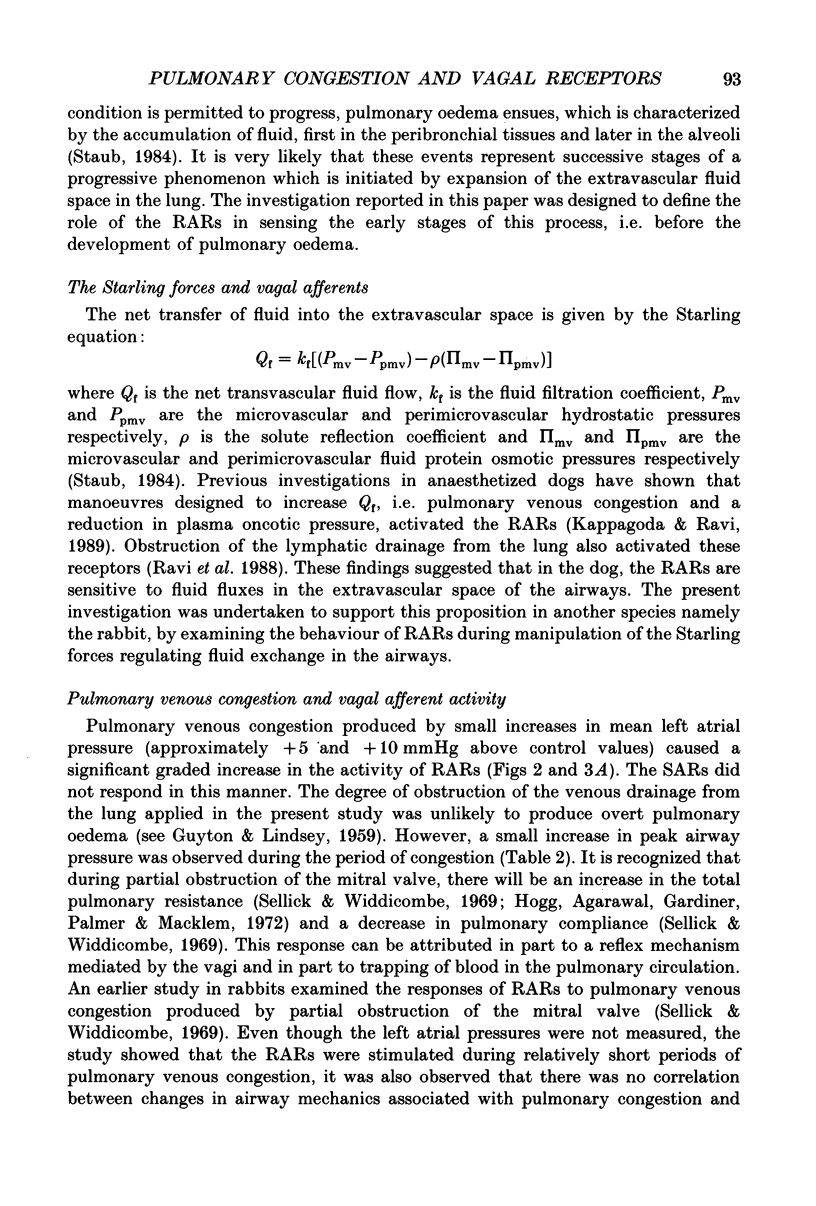
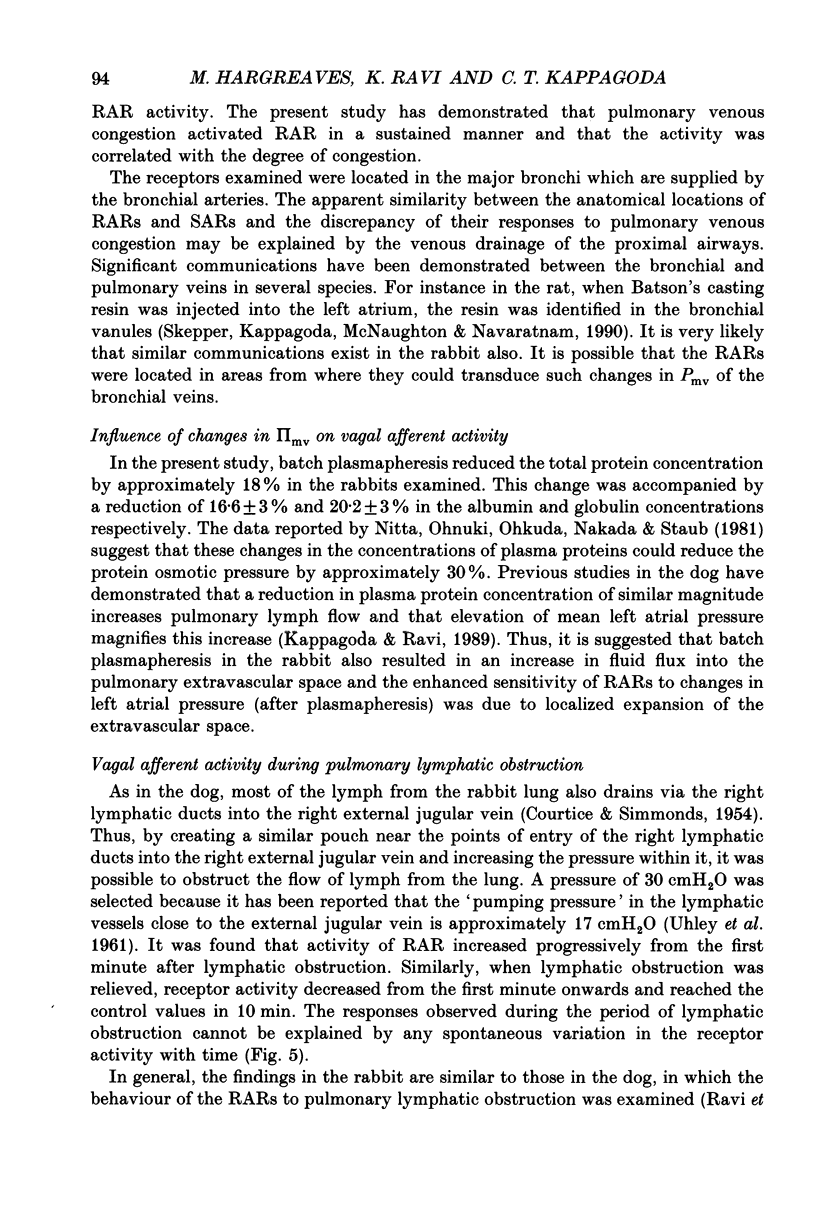
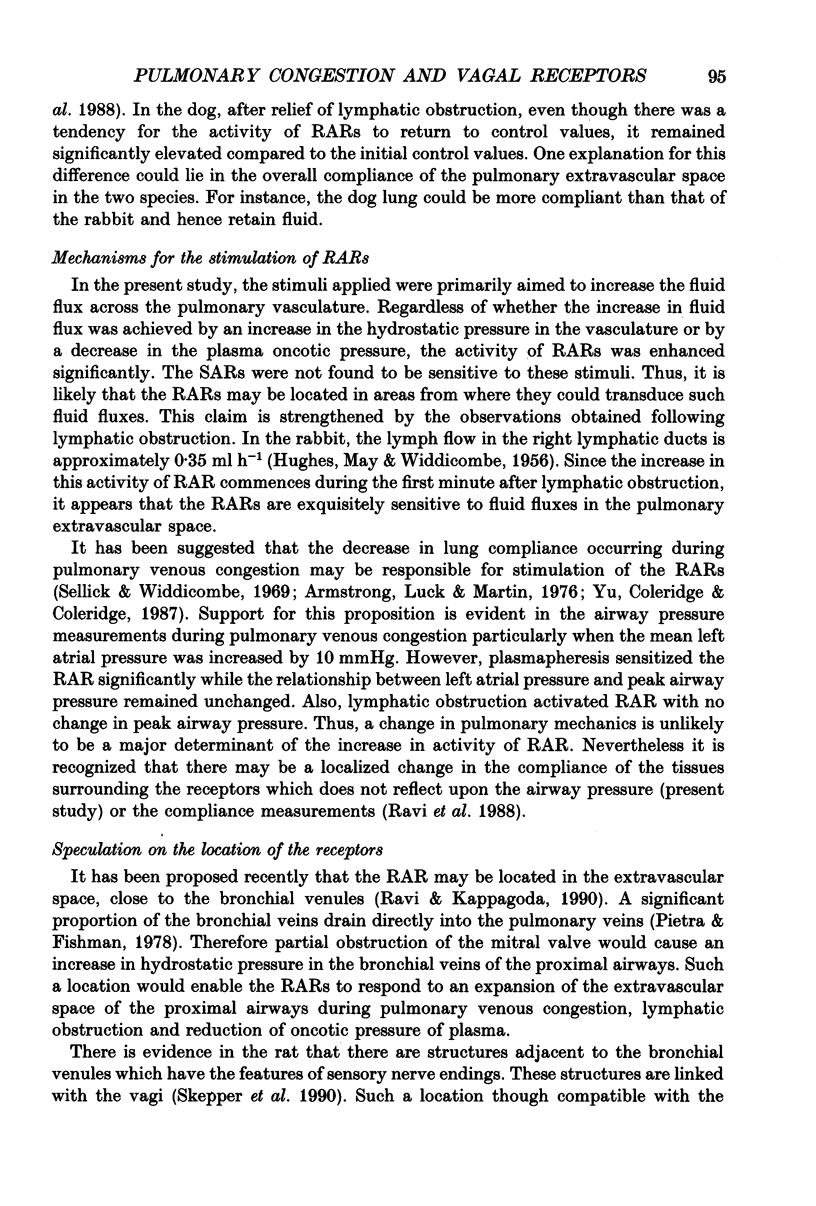
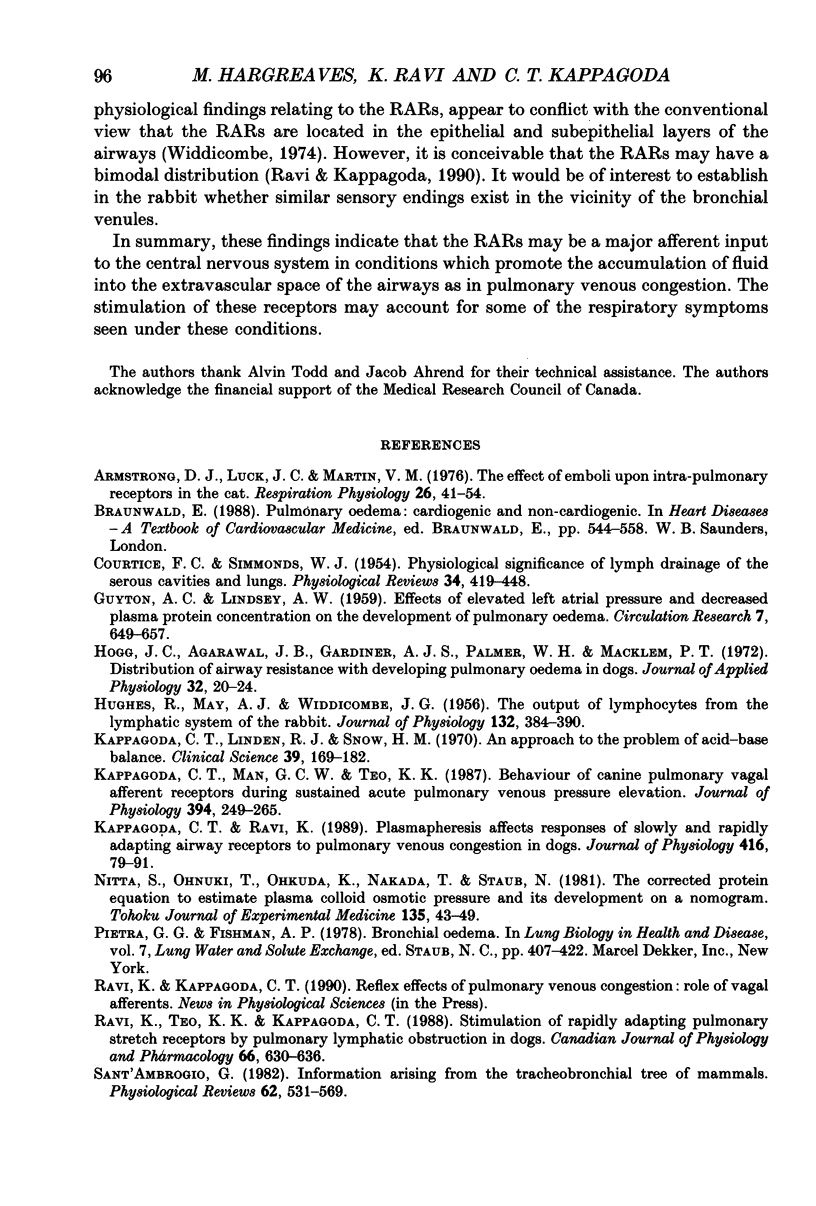
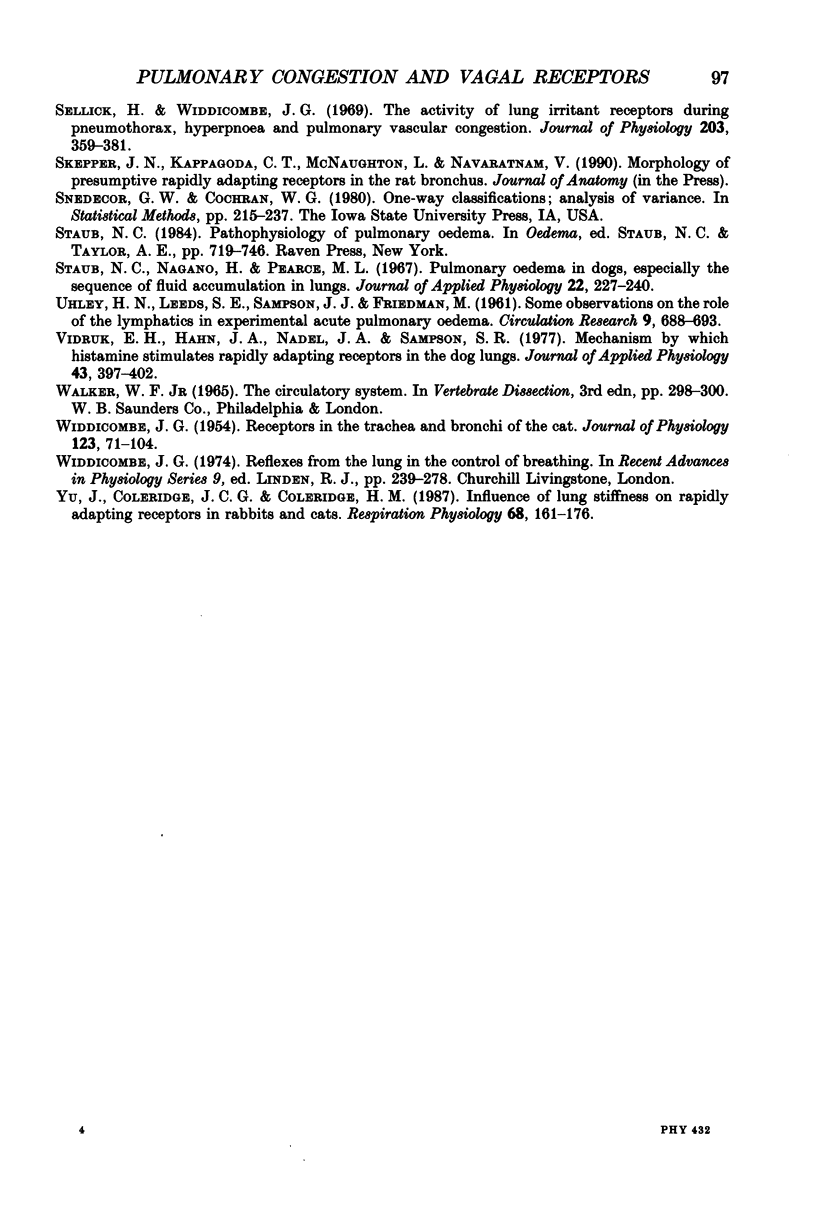
Images in this article
Selected References
These references are in PubMed. This may not be the complete list of references from this article.
- Armstrong D. J., Luck J. C., Martin V. M. The effect of emboli upon intrapulmonary receptors in the cat. Respir Physiol. 1976 Feb;26(1):41–54. doi: 10.1016/0034-5687(76)90050-5. [DOI] [PubMed] [Google Scholar]
- COURTICE F. C., SIMMONDS W. J. Physiological significance of lymph drainage of the serous cavities and lungs. Physiol Rev. 1954 Jul;34(3):419–448. doi: 10.1152/physrev.1954.34.3.419. [DOI] [PubMed] [Google Scholar]
- GUYTON A. C., LINDSEY A. W. Effect of elevated left atrial pressure and decreased plasma protein concentration on the development of pulmonary edema. Circ Res. 1959 Jul;7(4):649–657. doi: 10.1161/01.res.7.4.649. [DOI] [PubMed] [Google Scholar]
- HUGHES R., MAY A. J., WIDDICOMBE J. G. The output of lymphocytes from the lymphatic system of the rabbit. J Physiol. 1956 May 28;132(2):384–390. doi: 10.1113/jphysiol.1956.sp005532. [DOI] [PMC free article] [PubMed] [Google Scholar]
- Hogg J. C., Agarawal J. B., Gardiner A. J., Palmer W. H., Macklem P. T. Distribution of airway resistance with developing pulmonary edema in dogs. J Appl Physiol. 1972 Jan;32(1):20–24. doi: 10.1152/jappl.1972.32.1.20. [DOI] [PubMed] [Google Scholar]
- Kappagoda C. T., Linden R. J., Snow H. M. An approach to the problems of acid-base balance. Clin Sci. 1970 Aug;39(2):169–182. doi: 10.1042/cs0390169. [DOI] [PubMed] [Google Scholar]
- Kappagoda C. T., Man G. C., Teo K. K. Behaviour of canine pulmonary vagal afferent receptors during sustained acute pulmonary venous pressure elevation. J Physiol. 1987 Dec;394:249–265. doi: 10.1113/jphysiol.1987.sp016869. [DOI] [PMC free article] [PubMed] [Google Scholar]
- Kappagoda C. T., Ravi K. Plasmapheresis affects responses of slowly and rapidly adapting airway receptors to pulmonary venous congestion in dogs. J Physiol. 1989 Sep;416:79–91. doi: 10.1113/jphysiol.1989.sp017750. [DOI] [PMC free article] [PubMed] [Google Scholar]
- Nitta S., Ohnuki T., Ohkuda K., Nakada T., Staub N. C. The corrected protein equation to estimate plasma colloid osmotic pressure and its development on a nomogram. Tohoku J Exp Med. 1981 Sep;135(1):43–49. doi: 10.1620/tjem.135.43. [DOI] [PubMed] [Google Scholar]
- Ravi K., Teo K. K., Kappagoda C. T. Stimulation of rapidly adapting pulmonary stretch receptors by pulmonary lymphatic obstruction in dogs. Can J Physiol Pharmacol. 1988 May;66(5):630–636. doi: 10.1139/y88-098. [DOI] [PubMed] [Google Scholar]
- Sant'Ambrogio G. Information arising from the tracheobronchial tree of mammals. Physiol Rev. 1982 Apr;62(2):531–569. doi: 10.1152/physrev.1982.62.2.531. [DOI] [PubMed] [Google Scholar]
- Sellick H., Widdicombe J. G. The activity of lung irritant receptors during pneumothorax, hyperpnoea and pulmonary vascular congestion. J Physiol. 1969 Aug;203(2):359–381. doi: 10.1113/jphysiol.1969.sp008868. [DOI] [PMC free article] [PubMed] [Google Scholar]
- Staub N. C., Nagano H., Pearce M. L. Pulmonary edema in dogs, especially the sequence of fluid accumulation in lungs. J Appl Physiol. 1967 Feb;22(2):227–240. doi: 10.1152/jappl.1967.22.2.227. [DOI] [PubMed] [Google Scholar]
- UHLEY H., LEEDS S. E., SAMPSON J. J., FRIEDMAN M. Some observations on the role of the lymphatics in experimental acute pulmonary edema. Circ Res. 1961 May;9:688–693. doi: 10.1161/01.res.9.3.688. [DOI] [PubMed] [Google Scholar]
- Vidruk E. H., Hahn H. L., Nadel J. A., Sampson S. R. Mechanisms by which histamine stimulates rapidly adapting receptors in dog lungs. J Appl Physiol Respir Environ Exerc Physiol. 1977 Sep;43(3):397–402. doi: 10.1152/jappl.1977.43.3.397. [DOI] [PubMed] [Google Scholar]
- WIDDICOMBE J. G. Receptors in the trachea and bronchi of the cat. J Physiol. 1954 Jan;123(1):71–104. doi: 10.1113/jphysiol.1954.sp005034. [DOI] [PMC free article] [PubMed] [Google Scholar]
- Yu J., Coleridge J. C., Coleridge H. M. Influence of lung stiffness on rapidly adapting receptors in rabbits and cats. Respir Physiol. 1987 May;68(2):161–176. doi: 10.1016/s0034-5687(87)80003-8. [DOI] [PubMed] [Google Scholar]



